Key Takeaways
- Salt can kill fleas by dehydration, but it’s far from a complete solution since it doesn’t reach fleas hiding deep in carpets and furniture.
- Salt primarily targets adult fleas, leaving eggs, larvae, and pupae largely unaffected—allowing infestations to quickly return.
- Despite its appeal as a natural remedy, salt poses risks to pets, including potential salt poisoning, skin irritation, and household damage.
- For effective, lasting flea control, rely on comprehensive methods such as regular vacuuming, hot washing, and vet-approved flea treatments.
- Diatomaceous earth is a safer, more effective alternative to salt for natural flea control around your home.
- Seasonal vigilance, especially during warmer months, and seeking professional pest control when necessary, ensures thorough flea eradication and prevention.
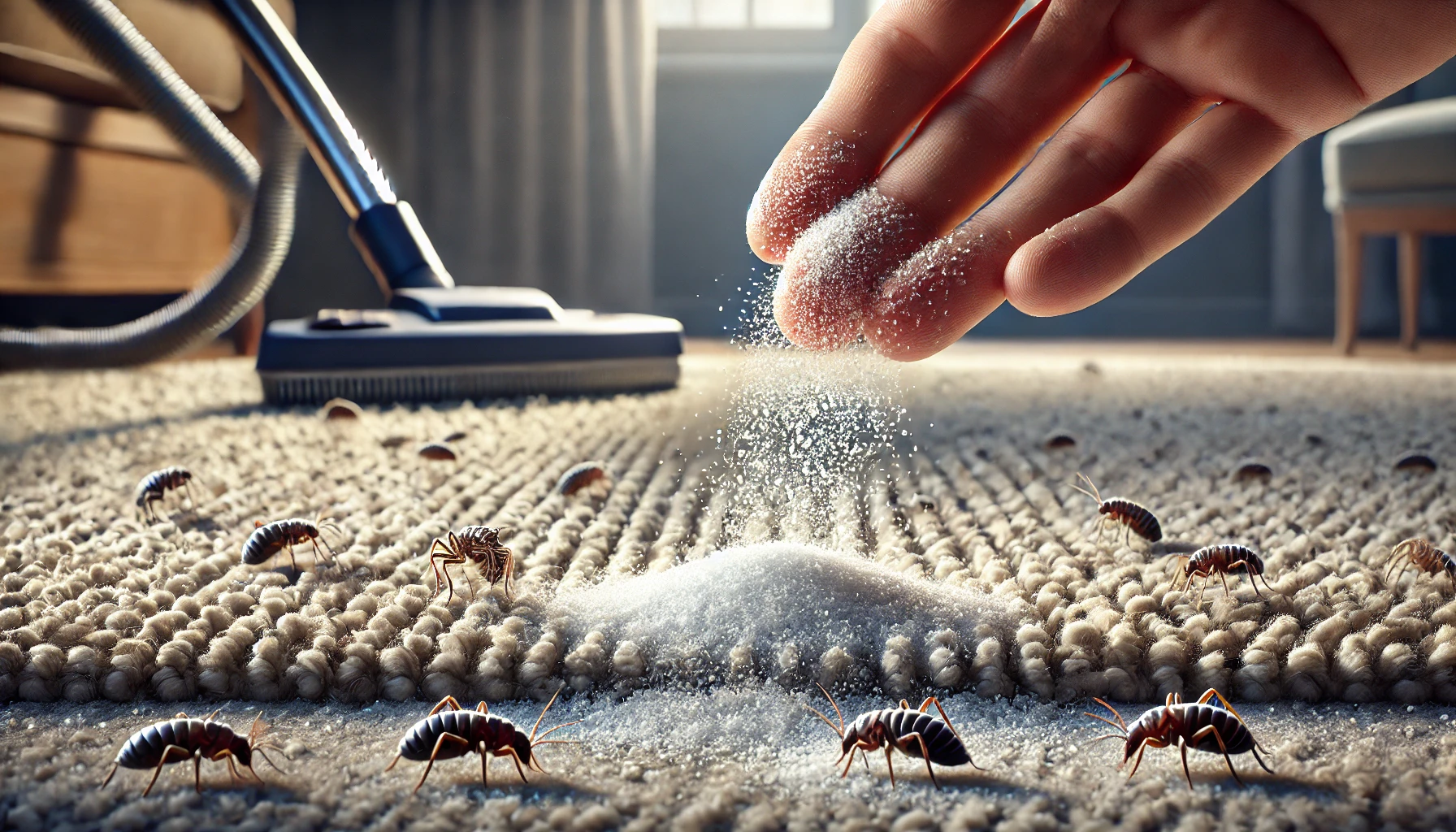 If you’ve ever had a flea infestation at home, you’ve probably tried your hand at a multitude of DIY solutions on the internet. And seriously, one of the most often cited fixes is something as basic as table salt. You know what? It sounds too good to be true—cheap, organic, and widely available. But there’s a catch: Is salt actually doing anything, or is this another flea-control myth?
Let’s take it easy and see what happens when salt and fleas come together. We’ll discover if this pantry staple is the real deal or just another online myth.
If you’ve ever had a flea infestation at home, you’ve probably tried your hand at a multitude of DIY solutions on the internet. And seriously, one of the most often cited fixes is something as basic as table salt. You know what? It sounds too good to be true—cheap, organic, and widely available. But there’s a catch: Is salt actually doing anything, or is this another flea-control myth?
Let’s take it easy and see what happens when salt and fleas come together. We’ll discover if this pantry staple is the real deal or just another online myth.
First, Understand the Flea Problem
Imagine tiny creatures laying hundreds of eggs around your house—in carpets, furniture, and your pet’s favourite bed. That’s precisely what fleas do. They reproduce rapidly, and their entire lifecycle from egg to adult takes about two to three weeks. That means you’re battling an army in multiple stages when you’re fighting fleas. Simply put, tackling fleas is more complex than scattering some salt around. Fleas are sneaky little pests; they’re masters of hiding and reproducing, quickly escalating from a minor annoyance to a major infestation. The truth is, by the time you notice one flea hopping around, chances are there are already hundreds more hidden away. Not exactly a comforting thought, right? To make matters worse, flea infestations aren’t just irritating—they can pose real health risks to you and your pets. Fleas can transmit tapeworms and cause severe allergic reactions in pets, known as flea allergy dermatitis. Humans aren’t off the hook either; flea bites can cause itching, swelling, and even infections if scratched excessively.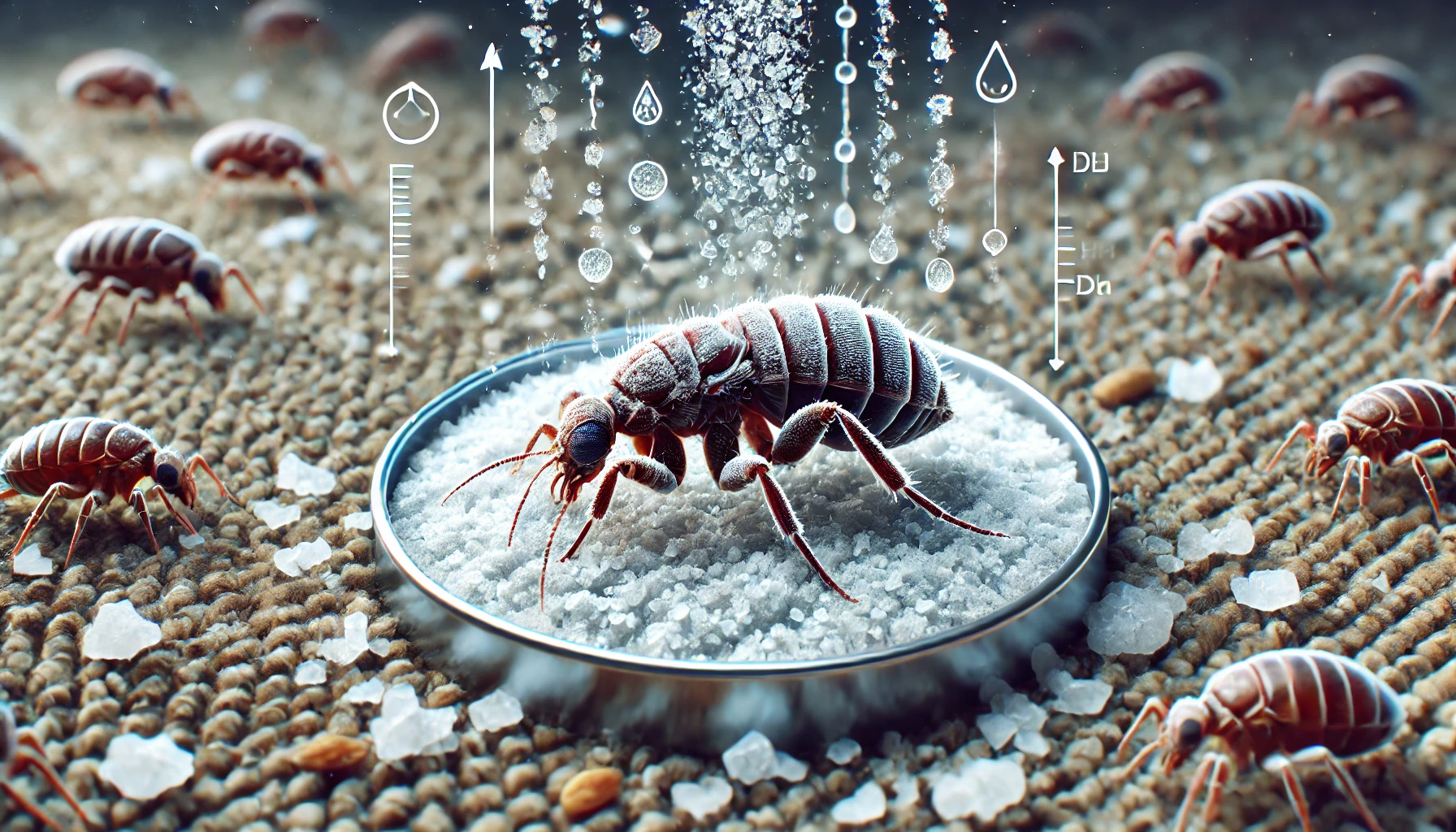

Not getting a solution?
Get your free pest control estimate today!How Salt Works Against Fleas
Here’s the thing: salt isn’t useless against fleas. It kills them through dehydration. Fleas have exoskeletons—tough outer shells—that help retain moisture. When salt crystals come into contact with these pests, they absorb the fleas’ moisture, drying them out. Think of it like sprinkling salt on a juicy fruit—it quickly becomes dry and shriveled. Fleas experience something similar:- Salt crystals pierce through their protective outer layer.
- It sucks the moisture right out, causing severe dehydration.
- Eventually, fleas perish within a few hours to a couple of days.
Why Salt Falls Short of Complete Flea Control
- Let me explain why salt alone isn’t a miracle cure:
-
It Doesn't Reach Everywhere: Salt only kills fleas it directly contacts. Fleas hiding deep in carpets and furniture stay untouched.
-
Incomplete Life-Stage Elimination: Salt mainly kills adult fleas, leaving eggs, larvae, and pupae to restart the infestation cycle.
-
Temporary Fix: Salt treatments offer short-term relief, but fleas often return without broader, consistent control strategies.
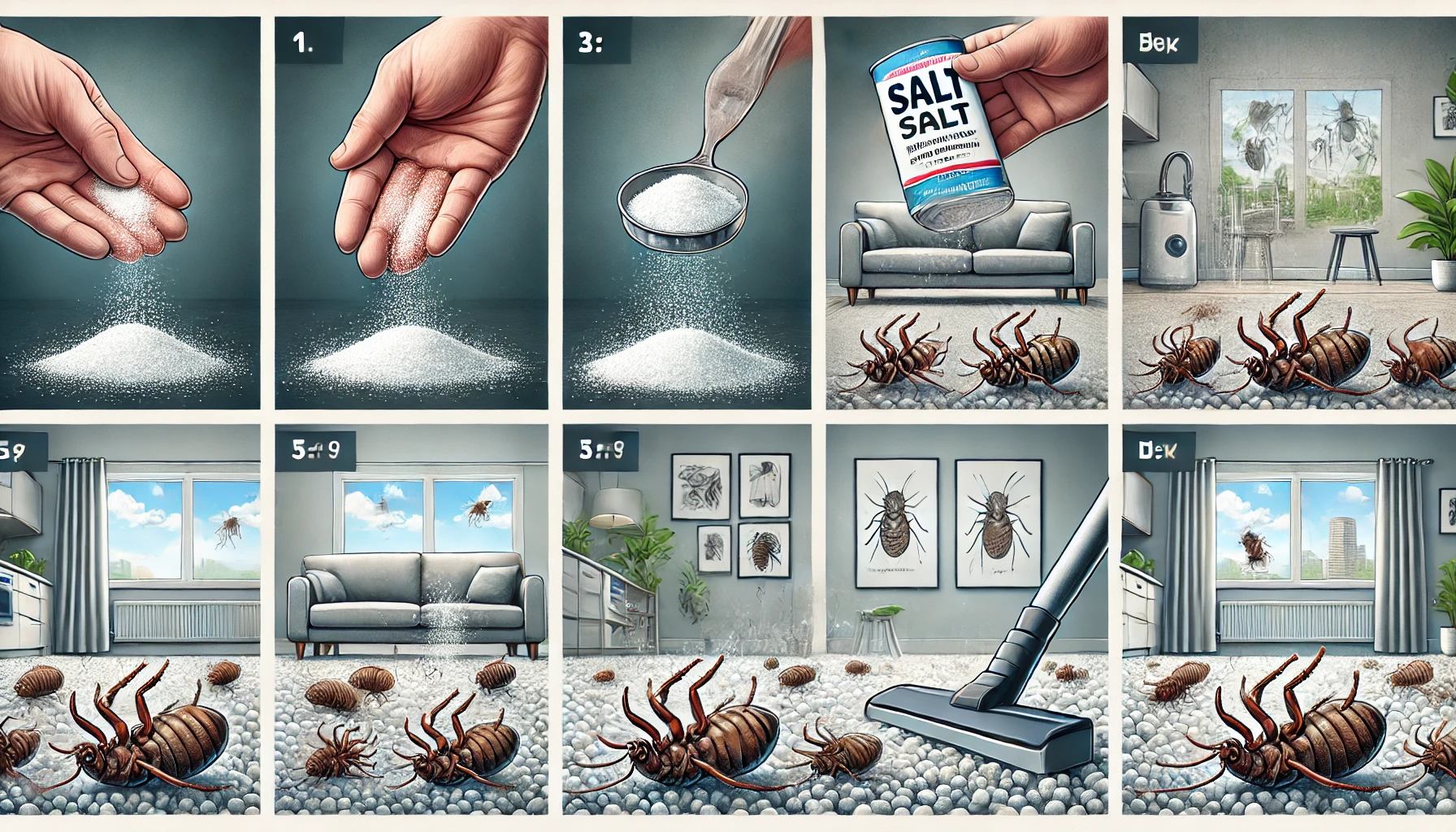
Want to Try Salt Anyway? Here's How You Do It Properly
- If you’re still thinking about giving salt a go (and honestly, who could blame you for trying?), at least do it right:
-
Pick Fine Salt: Use finely ground table or sea salt to help it settle into carpet fibers more effectively.
-
Apply Evenly: Sprinkle a light, uniform layer across infested areas—avoid clumps that are hard to clean.
-
Give It Time: Let salt sit for 24–48 hours so it has time to dehydrate fleas.
-
Vacuum Thoroughly: Vacuum all treated areas well and dispose of the vacuum contents outside immediately.
-
Repeat if Necessary: Multiple rounds may be required for persistent infestations, but use caution each time.
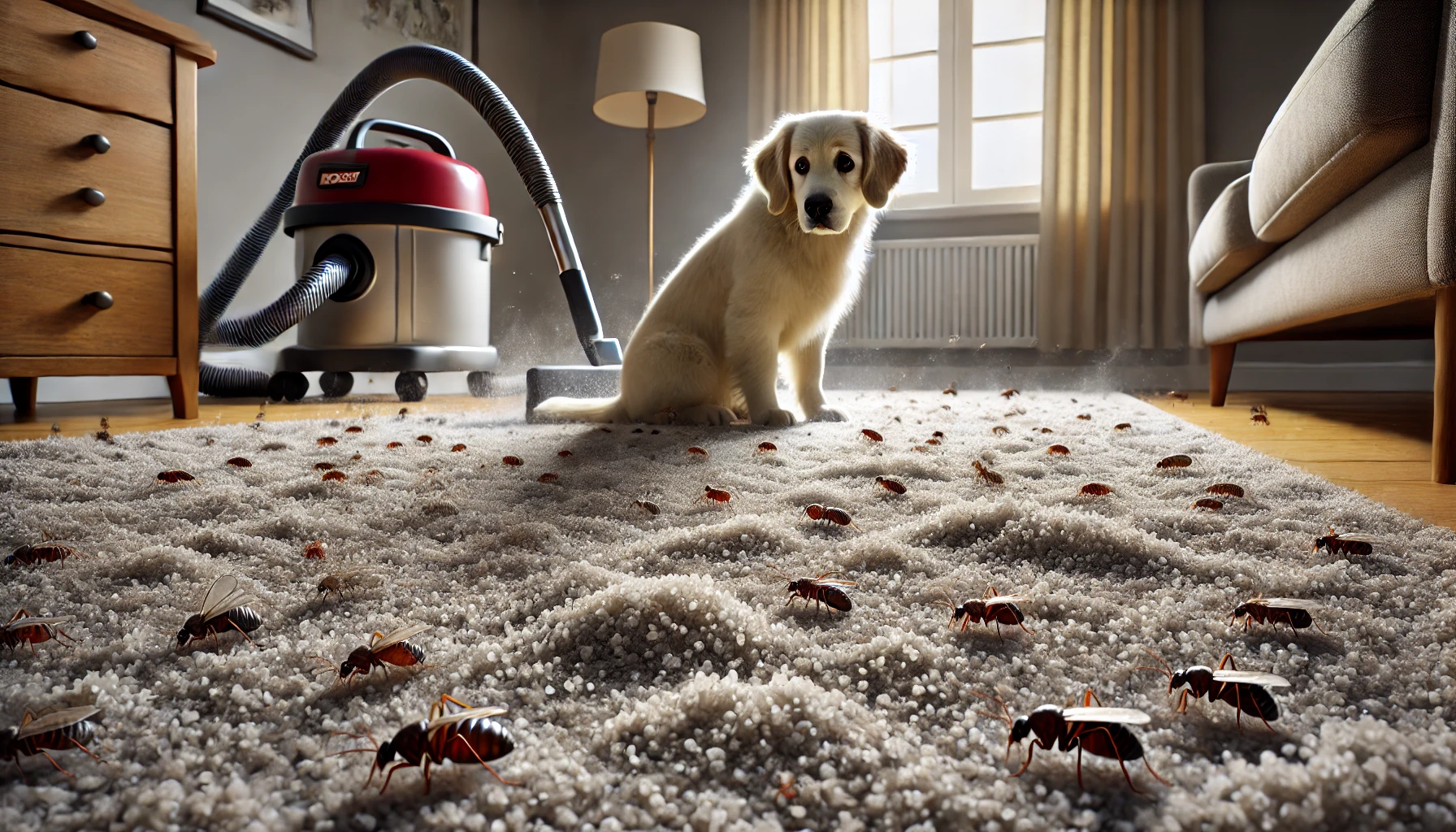
Real Talk: The Risks and Downsides
- Now, here’s where things get serious—salt isn’t harmless:
-
Pet Dangers: Salt can be toxic if ingested or absorbed by pets, causing serious health issues like vomiting or salt poisoning.
-
Irritation Issues: Salt exposure may irritate pet paws or human skin after extended contact.
-
Household Damage: Salt can draw in moisture, stain fabrics, crust carpets, or damage hardwood floors.
-
The Mess Factor: Salted floors can feel gritty underfoot and be difficult to clean—expect a mess.

Better Ways to Keep Fleas at Bay
If you’re serious about keeping fleas out for good, you’ll need a more comprehensive approach. Here’s how to tackle flea infestations effectively: Regular Vacuuming is Your Best Friend Vacuum carpets, rugs, furniture, and pet bedding regularly—daily if possible. It’s simple but powerful in removing fleas, eggs, and larvae. Remember to empty your vacuum bag or canister immediately after use to prevent fleas from returning to your home. Turn Up the Heat with Hot Washing Wash pet bedding and fabrics in hot water (above 130°F), then dry on high heat. Heat is lethal to fleas and their eggs, offering a chemical-free way to eliminate these pests.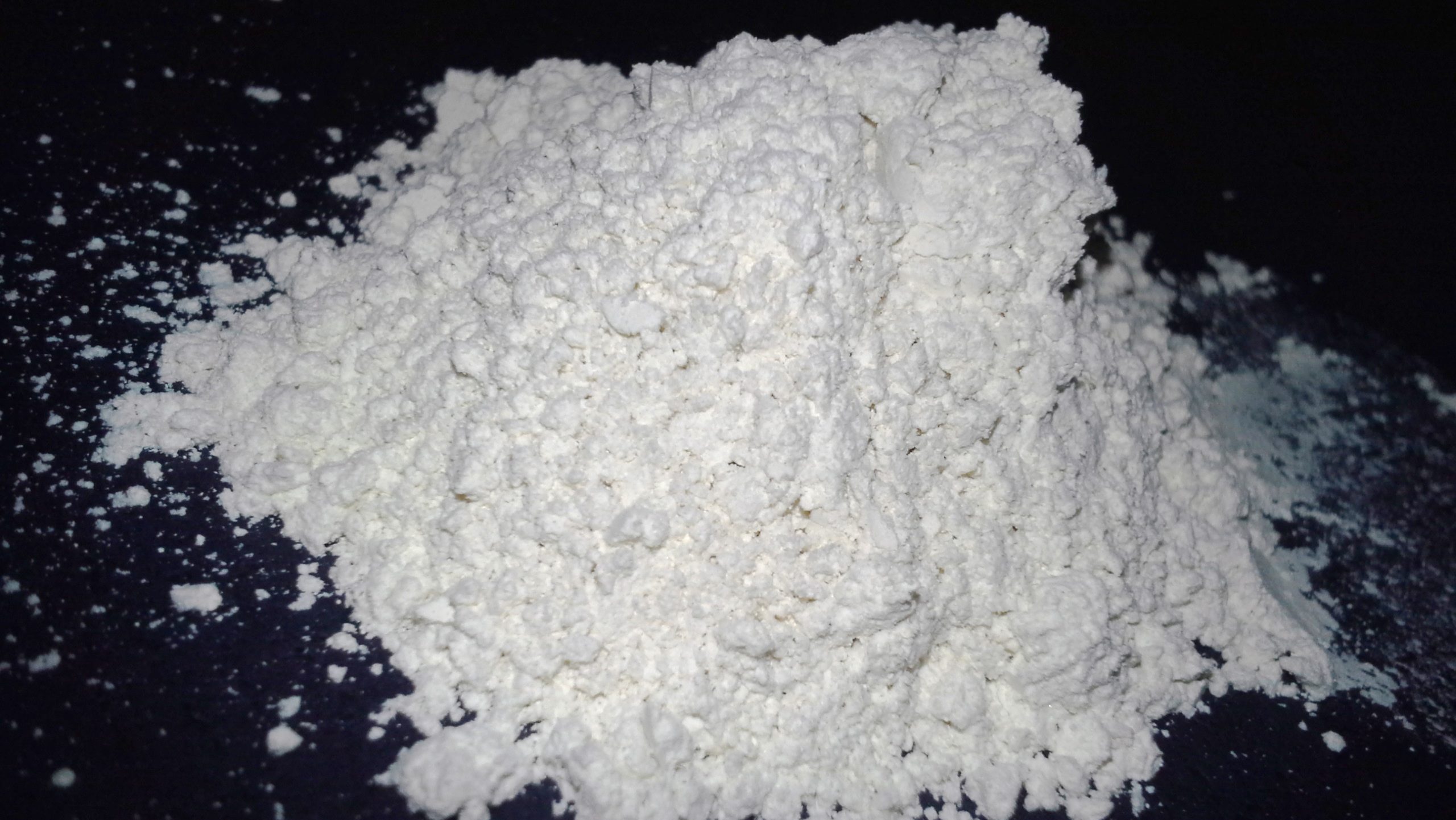 Diatomaceous Earth (Safer and More Effective)
This natural powder works like salt, but better. Lightly dust carpets and furniture, wait a day, then vacuum thoroughly. Unlike salt, diatomaceous earth is less irritating and safer for your pets and family when used correctly.
Veterinary Flea Treatments
Chat with your vet about topical treatments, oral meds, or flea collars. These products consistently outperform home remedies like salt. Brands like Frontline, Advantage, or NexGard have proven track records for effective flea control.
Professional Pest Control
When all else fails, call professionals. They know how to eliminate fleas at every lifecycle stage, ensuring longer-lasting relief. Experts can use treatments tailored to your home’s needs, providing peace of mind. Also, consider seasonal measures—fleas often worsen during warmer months, making spring and summer prime times for extra vigilance.
Regularly mowing your lawn, keeping bushes trimmed, and ensuring outdoor areas are dry can also help minimize flea habitats. Combining these methods gives you the best shot at reclaiming your home from fleas—without relying solely on kitchen ingredients.
Salt might help a little, but it’s just one piece of a bigger flea-control puzzle.
If you feel things have gone out of control, it is advised to contact pest control professionals. Our team can provide a customized approach to protect your home effectively.
Diatomaceous Earth (Safer and More Effective)
This natural powder works like salt, but better. Lightly dust carpets and furniture, wait a day, then vacuum thoroughly. Unlike salt, diatomaceous earth is less irritating and safer for your pets and family when used correctly.
Veterinary Flea Treatments
Chat with your vet about topical treatments, oral meds, or flea collars. These products consistently outperform home remedies like salt. Brands like Frontline, Advantage, or NexGard have proven track records for effective flea control.
Professional Pest Control
When all else fails, call professionals. They know how to eliminate fleas at every lifecycle stage, ensuring longer-lasting relief. Experts can use treatments tailored to your home’s needs, providing peace of mind. Also, consider seasonal measures—fleas often worsen during warmer months, making spring and summer prime times for extra vigilance.
Regularly mowing your lawn, keeping bushes trimmed, and ensuring outdoor areas are dry can also help minimize flea habitats. Combining these methods gives you the best shot at reclaiming your home from fleas—without relying solely on kitchen ingredients.
Salt might help a little, but it’s just one piece of a bigger flea-control puzzle.
If you feel things have gone out of control, it is advised to contact pest control professionals. Our team can provide a customized approach to protect your home effectively.
Visit our Species, Control, and DIY Guide sections for additional resources on fleas and ways to tackle a fleas infestation.





